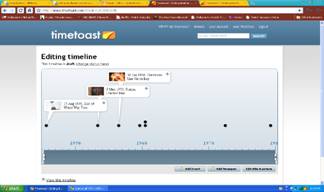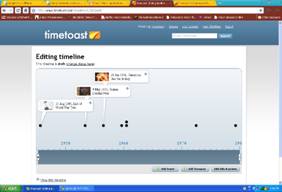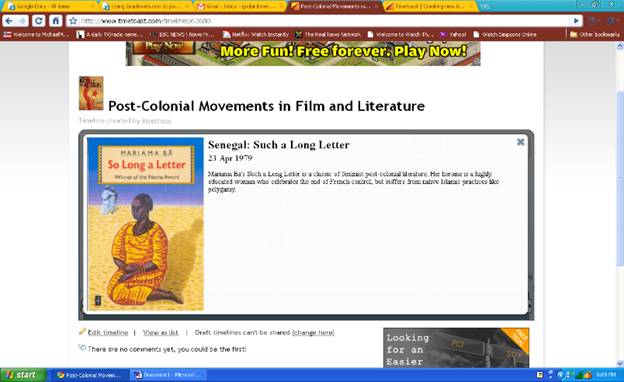Creating Timelines Using Timetoast
Pamela AuCoin
Recently, an English teacher asked me about collaborating on a timeline, as part of her Regents-prep curriculum. This was surprising, since history teachers are not accustomed to teachers in other disciplines using timelines.
Yet timelines are great interdisciplinary tools. Timelines can function as excellent graphic organizers and study aids. But they are also a worthy end-product in and of themselves. Timelines can integrate literature, writing, the visual arts, and geography—making them an ideal tool for interdepartmental collaboration.
Recently I designed a social studies/world literature project using timetoast.com. My students are fascinated by post-colonial independence movements, and love the Nigerian classic from the period, Things Fall Apart. For this assignment, students create timelines that incorporate the chronological details of the post-colonial resistance movements in Africa, including both when specific countries like Nigeria gained independence, and when classic post-colonial texts like Mariama Ba's Such a Long Letter and Chinua Achebe's Things Fall Apart were published. For each timeline entry, students write a paragraph about why each particular book is considered a classic text of the period. Students not only familiarize themselves with the major events, but develop an understanding of the historical context during which they were written.
Here’s how to get started:
- Go to www.timetoast.com
- Create a free account
- Click on "Create a New Timeline"
- Type in your title, and choose category from pull-down menu
- For each date, click on "Add Event"
- Use image uploader to add images
- In the description box, add your paragraph of description text
- Repeat steps 3 – 7 for each event
- Click on publish
 
Some project ideas:
Writing Historical Fiction: Student timelines created in history class could lend themselves to some good historical fiction! As a follow-up assignment, have students write their own original fiction stories – inspired by actual historical events
Creating Companion Timelines for Major Works of Fiction: Charles Dickens' editor wants to hire your class to produce a timeline to include as part of a teacher's companion to teaching the novel. Turn the project into a contest, to see which timeline gets published. You could limit students to ten events during the French Revolution, forcing students to really focus on which events and movements of the period are significant enough to include.
Family Histories: Students can interview family members, to determine the major historical events that affected them the most; perhaps a grandmother worked in a munitions factory during World War II, or an uncle remembers the first presidential election for which he could vote? Family interviews are rich fodder for timelines, and many students may choose to download actual family photos, when available.
Autobiographical Timelines: Students create timelines of the major events of their own lives. Remember, although our students are very young, they have lived through some very interesting world events, such as the election of the first African-American president, two wars, and the United States defeating Algeria in the World Cup.

Do
you have a comment or suggestion? E-mail
Pamela
|